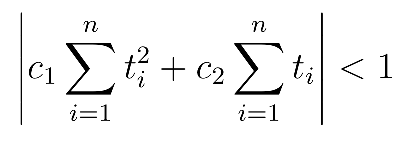Answered step by step
Verified Expert Solution
Question
1 Approved Answer
Let T1, T2, . . . , Tn be i.i.d. observations, each drawn from a common normal distribution with mean zero. With probability 1/2 this
- Let T1, T2, . . . , Tn be i.i.d. observations, each drawn from a common normal distribution with mean zero. With probability 1/2 this normal distribution has variance 1, and with probability 1/2 it has variance 4. Based on the observed values t1, t2, . . . , tn, we use the MAP rule to decide whether the normal distribution from which they were drawn has variance 1 or variance 4. The MAP rule decides that the underlying normal distribution has variance 1 if and only if:

Step by Step Solution
There are 3 Steps involved in it
Step: 1

Get Instant Access to Expert-Tailored Solutions
See step-by-step solutions with expert insights and AI powered tools for academic success
Step: 2

Step: 3

Ace Your Homework with AI
Get the answers you need in no time with our AI-driven, step-by-step assistance
Get Started


